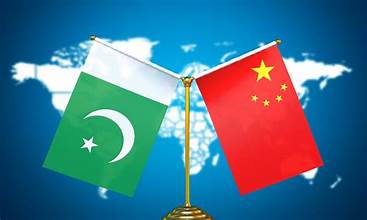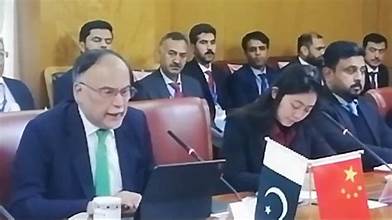The longstanding partnership between Pakistan and China continues to gain strength as both nations reaffirm their commitment to advancing the China-Pakistan Economic Corridor (CPEC). This flagship project, part of China’s Belt and Road Initiative (BRI), has been central to Pakistan’s economic aspirations and Beijing’s regional connectivity goals. Recently, leaders from both sides renewed their pledge to promote high-quality cooperation under CPEC, highlighting shared objectives of sustainable growth, infrastructure modernization, energy development, and regional integration.
The Essence of CPEC
Launched in 2013, CPEC represents one of the most ambitious development projects undertaken between Pakistan and China. It envisions linking China’s western region of Xinjiang with Pakistan’s Gwadar Port through an extensive network of roads, railways, pipelines, and special economic zones (SEZs). Beyond infrastructure, CPEC also encompasses energy projects, industrial cooperation, agricultural development, and people-to-people exchanges.
For Pakistan, CPEC is more than just an economic partnership—it is a pathway to industrialization, improved trade connectivity, and socio-economic uplift. For China, it provides a shorter trade route to the Arabian Sea while deepening its presence in South Asia.
Renewed Commitment for “High-Quality” Cooperation
In their recent discussions, officials from Pakistan and China emphasized the need to transform CPEC into a model of “high-quality” cooperation. This term, widely used in China’s BRI strategy, refers to projects that are not only economically beneficial but also environmentally sustainable, technologically advanced, and socially inclusive.
The focus on high-quality cooperation signifies a shift from the initial phase of CPEC—primarily infrastructure and energy development—to more sophisticated sectors such as digital economy, green energy, modern agriculture, and advanced industrialization.
Key Areas of Future Cooperation
- Industrial Development
- The establishment of Special Economic Zones (SEZs) remains at the heart of Pakistan’s industrial ambitions. Both countries aim to accelerate progress on Rashakai, Allama Iqbal, Dhabeji, and Bostan SEZs. These zones are expected to attract Chinese industries, boost exports, and generate employment opportunities.
- Energy Transition
- While early CPEC projects focused heavily on coal-based power plants to address Pakistan’s energy shortages, the renewed collaboration emphasizes clean and renewable energy. Solar, wind, and hydro projects are being prioritized to ensure long-term sustainability.
- Infrastructure Modernization
- The next phase will involve modernizing road and railway networks to enhance regional trade. Projects like the Main Line-1 (ML-1) railway upgrade are crucial for connecting major cities and supporting freight movement efficiently.
- Digital and Technological Cooperation
- With the world moving towards digital transformation, Pakistan and China have pledged to deepen cooperation in telecommunications, e-commerce, and emerging technologies such as artificial intelligence and cloud computing.
- Agricultural Innovation
- China’s advanced agricultural techniques are being introduced to Pakistan for improving crop yields, food processing, and supply chain management. This cooperation aims to support Pakistan’s food security and export competitiveness.
- Socio-Economic Development Projects
- Beyond large-scale infrastructure, the partnership will also fund projects in health, education, and vocational training to directly uplift communities.

Strategic Significance of CPEC
CPEC holds strategic value not only for Pakistan and China but also for the broader region. The corridor provides landlocked Central Asian states with access to maritime trade routes, enhances regional economic integration, and positions Pakistan as a hub of connectivity.
For China, Gwadar Port is vital for securing energy imports and diversifying trade routes, reducing reliance on the Strait of Malacca. This makes CPEC both an economic and geopolitical project, attracting global attention.
Challenges Ahead
Despite the renewed enthusiasm, CPEC faces several challenges that both nations must address:
- Security Concerns
- Attacks on Chinese nationals and CPEC projects in Pakistan have raised concerns. Ensuring the safety of workers and infrastructure remains a top priority for Pakistan.
- Financial and Debt Issues
- Pakistan’s economic struggles and growing debt burden have led to questions about its ability to finance large-scale projects. Ensuring transparency and sustainability in project financing is essential.
- Bureaucratic Hurdles
- Delays in approvals, land acquisition, and inter-provincial coordination have slowed down progress. Streamlining governance mechanisms is crucial.
- Regional Geopolitics
- CPEC has drawn skepticism from neighboring countries, especially India, which opposes the corridor’s passage through disputed territories. Geopolitical rivalries may continue to shape the pace and scope of collaboration.
Opportunities for Pakistan
While challenges persist, the renewed pledge creates immense opportunities for Pakistan. By focusing on industrial growth, renewable energy, and digital transformation, Pakistan can leverage CPEC to address unemployment, improve exports, and stabilize its economy.
Moreover, increased Chinese investment in technology and agriculture can help Pakistan diversify its economy beyond textiles and agriculture, making it more resilient in the face of global uncertainties.
Building a “People-Centric” CPEC

Another important dimension of the renewed cooperation is a focus on people-to-people ties. Scholarships, cultural exchanges, and vocational training programs are being expanded to ensure that ordinary citizens benefit from CPEC. This people-centric approach not only strengthens bilateral ties but also ensures that development reaches the grassroots level.
Looking Ahead
As Pakistan and China renew their pledge, the next decade of CPEC promises to be more transformative than its initial years. The first phase laid the foundation by addressing Pakistan’s power shortages and building basic infrastructure. The second phase, now underway, will determine whether CPEC can truly deliver on its promise of inclusive growth, innovation, and sustainable development.
The success of this renewed collaboration will depend on Pakistan’s ability to maintain political stability, improve governance, and ensure security. For China, maintaining a balance between economic expansion and environmental responsibility will be key. Together, both nations can set an example of high-quality development under the Belt and Road framework.
Conclusion
The reaffirmation of Pakistan and China’s commitment to enhancing high-quality CPEC cooperation reflects the evolving nature of their partnership. Moving beyond roads and power plants, the collaboration now encompasses industrialization, renewable energy, technology, and social development. If implemented effectively, the new phase of CPEC could become a game-changer for Pakistan’s economy and a vital link in China’s regional strategy.
Both countries have much to gain from this partnership, but the road ahead requires commitment, transparency, and adaptability. With renewed determination, Pakistan and China stand ready to take CPEC to new heights, making it a symbol of progress, connectivity, and shared prosperity.



